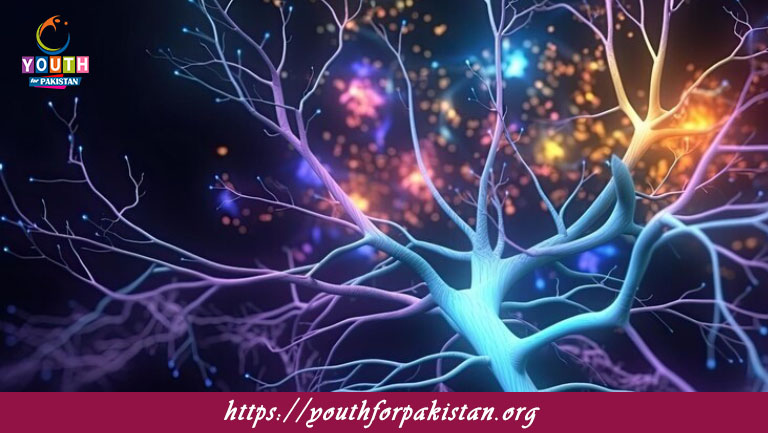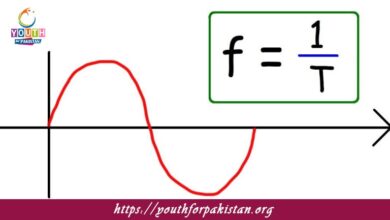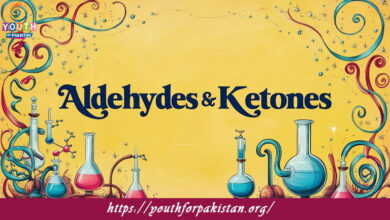Transmission Of Nerve Impulse Across Synapse MDCAT MCQs

Welcome to the Transmission Of Nerve Impulse Across Synapse MDCAT MCQs with Answers. In this post, we have shared Transmission Of Nerve Impulse Across Synapse Multiple Choice Questions and Answers for PMC MDCAT 2024. Each question in MDCAT Biology offers a chance to enhance your knowledge regarding Transmission Of Nerve Impulse Across Synapse MCQs in this MDCAT Online Test.
The neurotransmitter that is commonly involved in transmitting nerve impulses across a synapse is:
a) Insulin
b) Serotonin
c) Acetylcholine
d) Glutamate
The gap between two neurons where neurotransmitters are released is called the:
a) Axon
b) Dendrite
c) Synaptic cleft
d) Myelin sheath
Which of the following is a process that occurs during neurotransmission?
a) Reuptake
b) Transcription
c) Translation
d) Replication
The enzyme that breaks down acetylcholine in the synaptic cleft is:
a) Acetylcholinesterase
b) Dopamine
c) Norepinephrine
d) Glutamate
Which of the following occurs first in the process of synaptic transmission?
a) Neurotransmitter release
b) Action potential arrival
c) Binding to receptor
d) Enzyme degradation
The primary role of synaptic vesicles is to:
a) Transport ions
b) Store neurotransmitters
c) Generate action potentials
d) Degrade neurotransmitters
Which ion is crucial for the release of neurotransmitters from the presynaptic neuron?
a) Potassium
b) Sodium
c) Calcium
d) Magnesium
The process by which neurotransmitters are taken back into the presynaptic neuron is called:
a) Diffusion
b) Reuptake
c) Degradation
d) Exocytosis
The neurotransmitter that is primarily involved in mood regulation is:
a) Norepinephrine
b) Acetylcholine
c) Glutamate
d) Serotonin
Which of the following neurotransmitters is excitatory in the central nervous system?
a) GABA
b) Glycine
c) Glutamate
d) Dopamine
The neurotransmitter that inhibits muscle contraction at the neuromuscular junction is:
a) Norepinephrine
b) Acetylcholine
c) GABA
d) Serotonin
What happens to neurotransmitters after they bind to their receptors?
a) They are degraded
b) They are reuptaken
c) They remain bound permanently
d) They diffuse away
The chemical signal transmitted across the synapse is:
a) An action potential
b) An ion
c) A neurotransmitter
d) A hormone
The role of the postsynaptic membrane is to:
a) Release neurotransmitters
b) Generate an action potential
c) Recycle neurotransmitters
d) Store neurotransmitters
Which of the following best describes synaptic transmission?
a) Electrical signal only
b) Chemical signal only
c) Both electrical and chemical signals
d) Physical signal only
The neurotransmitter involved in muscle contraction is:
a) Acetylcholine
b) Serotonin
c) Dopamine
d) Norepinephrine
The process of neurotransmitter release into the synaptic cleft is called:
a) Endocytosis
b) Exocytosis
c) Phagocytosis
d) Osmosis
The primary function of neurotransmitters is to:
a) Store genetic information
b) Transfer electrical signals
c) Transmit signals across synapses
d) Regulate blood flow
Which neurotransmitter is associated with the “fight or flight” response?
a) Acetylcholine
b) Dopamine
c) Norepinephrine
d) Serotonin
Which neurotransmitter is involved in the regulation of sleep and mood?
a) Acetylcholine
b) GABA
c) Serotonin
d) Glutamate
The synaptic cleft is:
a) The space between two neurons
b) The structure inside the neuron
c) The area around the cell body
d) The junction of two axons
Which neurotransmitter is known for its role in inhibiting nerve impulses?
a) Glutamate
b) Acetylcholine
c) GABA
d) Dopamine
The action of neurotransmitters on the postsynaptic neuron is typically:
a) Inhibitory or excitatory
b) Always excitatory
c) Always inhibitory
d) None of the above
Which of the following statements is true regarding neurotransmitter receptors?
a) They are located on the presynaptic membrane
b) They are located on the postsynaptic membrane
c) They are located in the cytoplasm
d) They are found in the synaptic cleft
The reuptake of neurotransmitters is primarily carried out by:
a) The postsynaptic neuron
b) The presynaptic neuron
c) The synaptic cleft
d) The glial cells
The rapid depolarization of the postsynaptic membrane is caused by:
a) The influx of sodium ions
b) The efflux of potassium ions
c) The influx of calcium ions
d) The efflux of sodium ions
Which neurotransmitter is primarily involved in learning and memory?
a) Acetylcholine
b) Norepinephrine
c) Serotonin
d) GABA
The role of calcium ions in synaptic transmission is to:
a) Stimulate neurotransmitter release
b) Inhibit neurotransmitter release
c) Degrade neurotransmitters
d) Recycle neurotransmitters
Neurotransmitters are stored in:
a) Nucleus
b) Synaptic vesicles
c) Mitochondria
d) Ribosomes
The process of neurotransmitter degradation in the synaptic cleft is necessary to:
a) Enhance signal transmission
b) Prevent overstimulation of the postsynaptic neuron
c) Increase neurotransmitter release
d) Decrease neurotransmitter release
Which neurotransmitter is known to be involved in mood regulation and well-being?
a) Norepinephrine
b) Dopamine
c) Acetylcholine
d) Serotonin
The neurotransmitter that primarily acts as an inhibitory neurotransmitter in the brain is:
a) Glutamate
b) GABA
c) Acetylcholine
d) Dopamine
The primary function of synaptic vesicles is to:
a) Generate action potentials
b) Transport neurotransmitters
c) Degrade neurotransmitters
d) Facilitate ion exchange
Which neurotransmitter is involved in muscle contraction at the neuromuscular junction?
a) Dopamine
b) Glutamate
c) Acetylcholine
d) Serotonin
The influx of which ion into the presynaptic neuron triggers neurotransmitter release?
a) Sodium
b) Potassium
c) Calcium
d) Magnesium
Which neurotransmitter is involved in regulating alertness and arousal?
a) GABA
b) Acetylcholine
c) Norepinephrine
d) Dopamine
The primary function of the synaptic cleft is to:
a) Allow neurotransmitter diffusion
b) Store neurotransmitters
c) Produce action potentials
d) Recycle neurotransmitters
Which neurotransmitter is associated with pleasure and reward?
a) Glutamate
b) Acetylcholine
c) Dopamine
d) Serotonin
The process of neurotransmitter release into the synaptic cleft occurs through:
a) Endocytosis
b) Exocytosis
c) Diffusion
d) Osmosis
Which of the following neurotransmitters is primarily involved in inhibitory responses in the central nervous system?
a) Glutamate
b) GABA
c) Acetylcholine
d) Serotonin
The neurotransmitter that increases the likelihood of an action potential in the postsynaptic neuron is:
a) Inhibitory neurotransmitter
b) Excitatory neurotransmitter
c) Reuptake neurotransmitter
d) Degradative neurotransmitter
The neurotransmitter involved in mood, appetite, and sleep regulation is:
a) Dopamine
b) Serotonin
c) Norepinephrine
d) GABA
The role of neurotransmitter receptors on the postsynaptic membrane is to:
a) Release neurotransmitters
b) Bind neurotransmitters
c) Degrade neurotransmitters
d) Store neurotransmitters
Neurotransmitter release from the presynaptic neuron is triggered by:
a) Membrane depolarization
b) Membrane hyperpolarization
c) Ion efflux
d) Cell division
Which neurotransmitter is associated with attention and cognitive function?
a) Serotonin
b) Dopamine
c) GABA
d) Acetylcholine
The enzyme that breaks down dopamine in the synaptic cleft is:
a) Acetylcholinesterase
b) Monoamine oxidase
c) Catechol-O-methyltransferase
d) Glutamate decarboxylase
The reuptake of neurotransmitters primarily occurs in the:
a) Postsynaptic neuron
b) Presynaptic neuron
c) Synaptic cleft
d) Glial cells
If you are interested to enhance your knowledge regarding Physics, Chemistry, Computer, and Biology please click on the link of each category, you will be redirected to dedicated website for each category.





